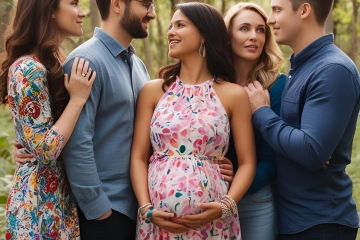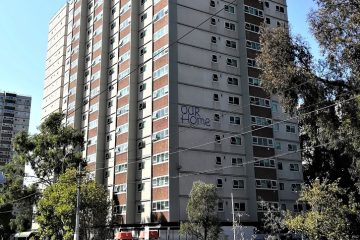For sociologists, age is one of those familiar variables we must consider, says Mary Evans. But it sometimes gets less attention than class, race, gender and sexuality.
The process of ageing reveals that although we might (and certainly do) alter and redefine some of these other sociological variables, we are never going to have much success in halting the reality of getting old. Whatever the health and beauty industry tell us, we can’t reverse or stop the ageing process. Birthdays, which may once have been awaited with eager anticipation (linked as they are to momentous life events such as when we can drive, have sex, buy alcohol) have in some instances become days of dread.
The pandemic has ruthlessly brought this home to many of us. How this might create new perceptions of the idea of ‘generations’ and ageing is today an issue we need to consider. Not least amongst these considerations must be the complexity of the term itself: that ‘generation’ can be both homogeneous and at the same time riddled with difference.
Sociologist Bryan Turner’s book Vulnerability and Human Rights argued that ‘human vulnerability sits at the heart of human rights principles, because security is a necessary condition for containing our vulnerability …’ (Turner, 2006: 140). His argument is that we can’t be safe unless we surrender some of our freedom to others. His book emphasised the many problems of that surrender; questioning what exactly it is we have to give up to the state in order to make ourselves safe.
In March 2020, suddenly everyone over 70 in the United Kingdom became vulnerable, defined as radically ‘unsafe’, although not in this case from a visible enemy. The enemy that would attack ‘older generations’, as they were often described, was not the kind of force Turner had suggested – military aggression, social tensions or rampant forces of nature – but a virus, an agent of human destruction invisible to the naked eye.
An entire generation was forced to shelter to avoid social contact and to take care to protect themselves from a virus, which we were told, was a particular danger to the old.
Cries of horror may have been expected at this explicit ageing of a generation, many of whom did not think of themselves as old. But immediate impressions, local and national evidence, didn’t suggest this was the case. The majority of the age group did shelter, did follow the rules and did accept the definition of a fragile generation – entirely at odds with what the generation was known to be up until that point: the privileged (if not actually over-privileged) baby boomers of the years after 1946.
Opposition
But amongst that group, and age groups near to it, were those who voiced determined opposition to lockdown policies and, ultimately, the possibility of vaccination. They articulated a furious opposition to authority and scientific evidence.
The schadenfreude of seeing very public figures such as Donald Trump and Boris Johnson infected by the very virus they had claimed to be ‘just a bit of flu’ was inevitable. But there were curious aspects to these events: the fact both Trump and Johnson were seriously ill did not quell ideas about the minimal threat of Covid-19; the length of time it took for vulnerability to be defined in terms of social, rather than chronological, circumstances; and the failure – across the United States and the UK, of the public communication of that Hobbesian thesis of safety being achievable only through abandoning the concept of absolute social freedom.
We therefore might need to take the making of a particularly vulnerable generation as a complex mix of reality (Covid-19 does seem to attack older generations more often and more severely than younger cohorts) and political rhetoric that invents mythical forms of social cohesion, as in ‘the people’ who appeared as active agents in the Brexit narrative. It is a particular populist form of social homogenisation that is much loved by politicians, despite the fact that through it, about half the population disappears.
As always, the old are easier to identify than the people: it is not, after all, that difficult for the old to be identified either visually or in terms of other social characteristics, such as absence from the workforce. Equally, appearing to protect the old might allow a political class to present itself as one with an actively working sense of social responsibility.
Except, of course, this did not occur. More than 38,000 ‘old’ people would die in UK care homes, where protection against infection, for both residents and staff, was minimal. This statistic, perhaps above all others in the existing history of the UK and Covid19, should make us pause and think about the implications of the term ‘a generation’ – in this case the ‘old’.
The UK government’s claim to have protected that old generation, despite the obvious ways in which many thousands within it were not protected, allowed leaders to appear to be taking effective action. But it was not long until evidence emerged that called the validity of the government’s claim in to question.
Circumstances
Social geographer Danny Dorling was amongst those who pointed out the actual social circumstances of those infected by the coronavirus, including poverty, work involving constant public engagement, and crowded living conditions (Dorling, 2020). None of these were conditions that the UK government wished to acknowledge. Just as these challenges to government narrative, supported by a clear evidence base, were emerging, so another favoured government narrative appeared: that of the preponderance of ‘previous health issues’ in cases of death from Covid-19.
Many of us imagined a case for putting two and two together: that of asking how those previous health issues might have emerged. To what extent did these individuals have responsibility for their bodily state?
This was a question that was all too often answered by the government in unspoken ways: the implicit suggestion that somehow these individuals had contributed to their own deaths. That the ‘old’ generation, in accounts of the deaths of its members, had apparently something to answer for. All too often, an account of an individual death was followed by the mantra ‘they had underlying health issues’.
These public narratives, however, were all too rarely accompanied by an acknowledgement of the ways in which the ‘old’ had lived. In the same way that the post-1946 generation have often been presented as uniquely privileged, so during the pandemic they were described as having unaccountable health issues. In both cases, this demonstrates the social reality that the idea of a homogeneous ‘generation’ masks.
For example, it is often noted that the post-1946 generation were able to attend university on full government grants. Two key points are missing from this statement: the first is that only about 5 per cent of 18-year-olds in that generation went to university; the second is that many people born in 1946 would still go on to work in manual jobs that involved dangerous and health-threatening conditions. Where in this, we have to ask, is the secure meaning of a generation?
The meaning of the term generation in the context of the pandemic should lead us to examine the general and more specifically sociological use of the term. We have to recognise two aspects of that ‘old’ generation, so variously presented as vulnerable or, outside the context of the pandemic, as fortunate and exceptionally privileged.
First, the very physical vulnerability of that generation was produced through harsh conditions of life and work.
Second, the assumed ‘privilege’ of that generation was experienced by only a small section of it. Moreover, the privileges experienced by that minority did not disappear, whereas for the majority, conditions of paid work would transform into new forms of precarity and exploitation.
Whether in pandemic times or ‘normal’ times, we should regard speaking with confidence of homogeneous ‘generations’ as problematic. Not least because forms of privilege can both endure and be exaggerated, at the same time as so many forms of disadvantage endure.
Mary Evans is a visiting professor in the Department of Gender Studies, London School of Economics and Political Science. She has taught sociology and gender for four decades and is the author of books on feminist and cultural issues.
References
Dorling, D. (2020, November 29). Want to understand the Covid map? Look at where we live and how we work. The Guardian [online] https://www.theguardian.com/commentisfree/2020/nov/29/want-to-understand-the-covid-map-look-at-where-we-live-and-how-we-work
Turner, B. (2006). Human Rights and Vulnerability. The Pennsylvania State University Press.
—
This blogpost first appeared in the October issue of the Sociological Review magazine:
Evans, M. (2021, October 5). Underlying Assumptions: What COVID-19 taught us about ‘generational homogeneity’ [Online]. The Sociological Review. https://doi.org/10.51428/tsr.nirb9386
© 2021 Mary Evans. This work is licensed under a Creative Commons Attribution-Non-Commercial-Share-Alike 4.0 International License. Please consult the Creative Commons guidelines for information on how you may reproduce and re-use the content of this article.



0 Comments